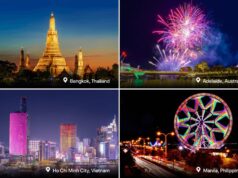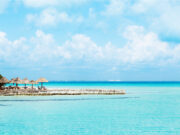 Have you ever wondered why military pilots, test pilots, stunt pilots and even astronauts wear flight suits to work? Have you noticed that flight suits do not have buttons, belts, or a necktie? After decades of observing pilots sitting in cockpits and flight decks for an extended duration, these organizations have realized that apparel accessory items such as belts and neck-ties are not only very uncomfortable, but are hazardous to pilots’ health. In a nutshell, belts, buttons and neckties are very constricting and do not stretch, flex or allow our bodies to change shape naturally when we move from standing to sitting. Belts, collars and neckties interfere with our bio-mechanics when we move. Even trousers that do not stretch can also be a hazard, especially if you are wearing your pants waist size an inch or two too small.
Have you ever wondered why military pilots, test pilots, stunt pilots and even astronauts wear flight suits to work? Have you noticed that flight suits do not have buttons, belts, or a necktie? After decades of observing pilots sitting in cockpits and flight decks for an extended duration, these organizations have realized that apparel accessory items such as belts and neck-ties are not only very uncomfortable, but are hazardous to pilots’ health. In a nutshell, belts, buttons and neckties are very constricting and do not stretch, flex or allow our bodies to change shape naturally when we move from standing to sitting. Belts, collars and neckties interfere with our bio-mechanics when we move. Even trousers that do not stretch can also be a hazard, especially if you are wearing your pants waist size an inch or two too small.
This is more than about simple discomforts. This is about harming your health over a long term period. Your uniform is an occupational health hazard for the following reasons:
1.
Sitting in pants that are too small, do not stretch, and especially while wearing a leather belt causes many problems. Diastolic blood pressure increases (the second and lower blood pressure number that measures pressure between heart beats).
2.
Sitting in pants that do not stretch, especially with a belt, does not allow our abdomen (intestines and other organs within) to change shape naturally or distend normally, and forces our stomach upwards into our diaphragm and the hiatus opening, where the esophagus and vagus nerve pass through. Overtime, this leads to acid-reflux, heartburn (gastroesophageal reflux disease, or GERD) as stomach acid is forced into the esophagus, and possibly even a hiatal hernia, where part of your stomach gets pinched through the opening of the hiatus. This can be very damaging to the stomach if the blood supply is strangled.
3. The long term squeezing of the abdomen also puts added pressure on the omentum which causes omental-fat (internal visceral fat) to secrete inflammatory chemicals and cortisol, causing further distention and bloating.
4. Flatulence or internal gas can no longer move or pass as smoothly in the intestines with the added abdominal pressure and bloating. As the cabin altitude climbs to cruise phase, (up to 8000’ in most jet airliners), this trapped internal gas further expands, causing more tightness and distention.
5. Tight pants can cause meralgia paresthetica (commonly known as tight pants syndrome), an irritation of the nerves in your hips and front legs leading to numbness and tingling.
All these above symptoms and problems are further exacerbated by eating a large meal prior or during your flight, and of course by long-term sitting.
 6. The neck-tie required by most airlines also raises diastolic blood pressure and will further increase the risk of stroke, for any pilot who has already been clinically diagnosed as high stroke-risk. Almost every pilot I know either immediately loosens or removes their tie the moment the cockpit door is shut. Corporate security departments have been recommending pilots wear clip-on ties that could not be used against us by any potential flight deck intruders. Plus, this type of necktie does not constrict the carotid arteries running along our necks that supply blood to the head.
6. The neck-tie required by most airlines also raises diastolic blood pressure and will further increase the risk of stroke, for any pilot who has already been clinically diagnosed as high stroke-risk. Almost every pilot I know either immediately loosens or removes their tie the moment the cockpit door is shut. Corporate security departments have been recommending pilots wear clip-on ties that could not be used against us by any potential flight deck intruders. Plus, this type of necktie does not constrict the carotid arteries running along our necks that supply blood to the head.
What you can do to help yourself:
1. Always loosen your belt when you sit down for your flight. Always loosen or remove your necktie and unbutton the top button of your shirt. Consider switching to a clip-on necktie.
2. Make sure your uniform pants fit properly. If you have put on some weight, have your trousers tailored or buy new ones.
3. Do not wear tight underwear.
4. Do not eat a large meal right before your flight, or during your flight, but rather several smaller snacks. Never overeat while flying.
5. During cruise phase, when the autopilot is on, consider reclining your seat to allow your abdomen to expand. Also, take any lavatory breaks you are offered by the flight attendants in order to stand up more. This is healthy for myriad reasons.
6. Consider adding a probiotic supplement to your diet, to help ensure you have a proper balance of beneficial bacteria living in your intestines. The bacteria helps complete digestion, break down fiber, and minimize gas. Natural food sources are yogurt, cottage cheese and kombucha tea.
7. While spicy foods are generally considered healthy and thermogenic, they may not be an ideal choice during a long flight, especially if you already suffer from acid reflux or heartburn.
8. If you commute to the airport and your commute is long, consider commuting or driving in more comfortable, looser fitting attire, and then change into your more constricting uniform once you’ve arrived at the airport. This is what I do.
Of all the occupational hazards we face, our uniform should not be one of them. I think our airlines’ corporate departments have decided our comfort and health is secondary to appearance. They have forgotten that we are actually blue-collar workers, working for an hourly wage, operating complex and dynamic machinery. Regrettably, I think we are stuck wearing suits instead of flight suits, so be aware and do what you can to minimize risks and discomfort. ACN



























































































































